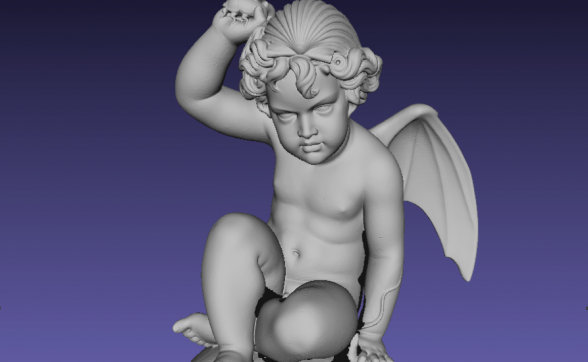Oliver Laric, 3-D scan, 2016. Courtesy the artist
The Software episode of Liverpool Biennial 2016 points towards a broader understanding of technology beyond its practical application. Scripts that run through the Biennial generate unexpected content and behaviour, creating parallel understandings of art and life.
The computer game Minecraft allows its users to invent their own world from simple block components, and to interact with the various spheres Minecraft constitutes – the hell-like Nether, for instance, which can only be entered through a smoke-filled portal. Minecraft Infinity Project works with Minecrafters the world over to create the largest ever virtual sculpture: a ‘portrait’ of Liverpool Biennial, in which users render their own version of the exhibition, taking inspiration from the artworks on show. It also incorporates a number of artworks by participating artists. Find out more at www.biennial.com/minecraft-infinity-project
Oliver Laric’s 3-D scans of sculptures from Liverpool’s Walker Art Gallery include work by John Gibson (1790–1866), who actively oversaw reproductions of his work in the form of statuettes, cameos and prints. 3-D prints of these scans exist across the Biennial, and data from the scans can be accessed, free, at www.threedscans.com.
Lawrence Abu Hamdan’s Hummingbird Clock is located physically outside the law courts in Derby Square, and online at www.hummingbirdclock.info. It is designed as a tool for investigations into civil and human rights violations. The clock records the second by second variations of the buzz made by the electrical grid. The sound files are made available online, so that the public can analyse the date and time of any recording made within earshot of the grid, in case they need to know whether the recording has been tampered with.
Dennis McNulty’s free smartphone app, BLESH, can be used to generate low resolution animations: blesh.net
An audio work by
Marcos Lutyens incorporating myths, rumours and portals can be downloaded and listened to whilst walking around the city, or sitting near the Chinatown arch.
Download the files here or listen below:
Dr. Chris Routledge from the University of Liverpool’s Continuing Education Department has created an audio guide on the history of Cains Brewery. Journey into Liverpool’s industrial past and download the guide here, listening to it as you wander through the brewery or the city itself.
Liverpool Biennial
55 New Bird Street
Liverpool L1 0BW
- T +44 (0)151 709 7444
- info@biennial.com
Liverpool Biennial is funded by
Founding Supporter
James Moores




